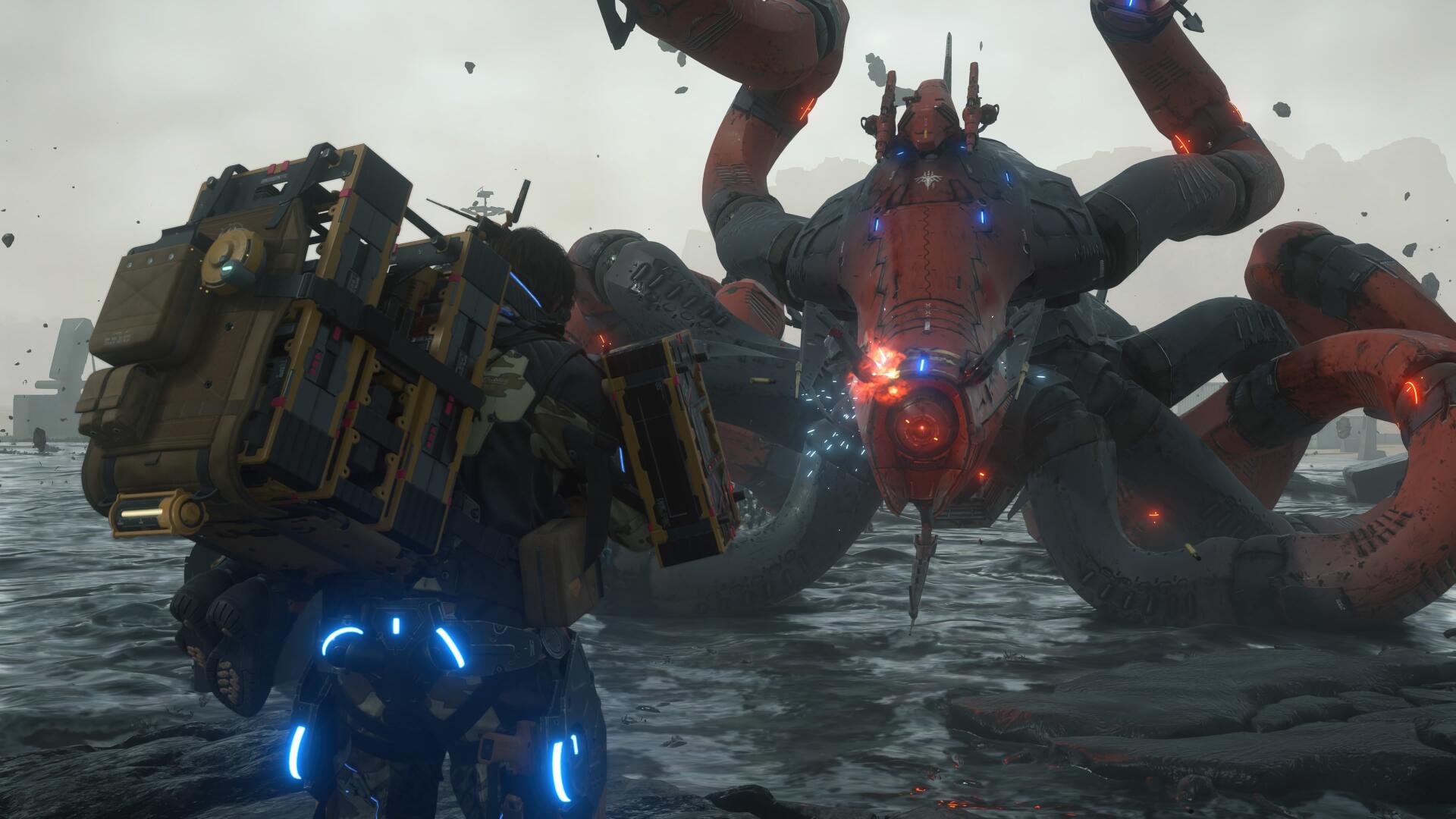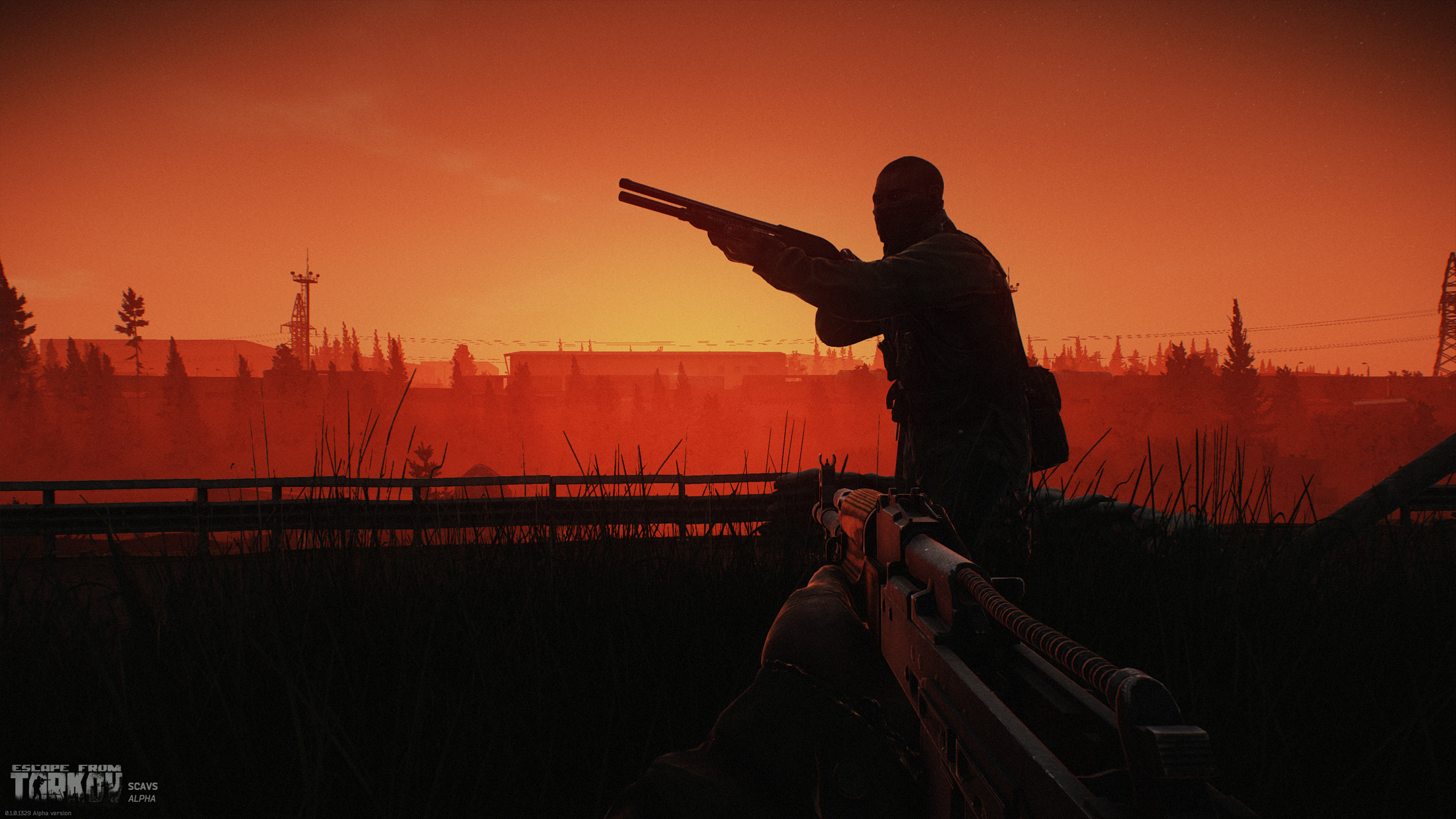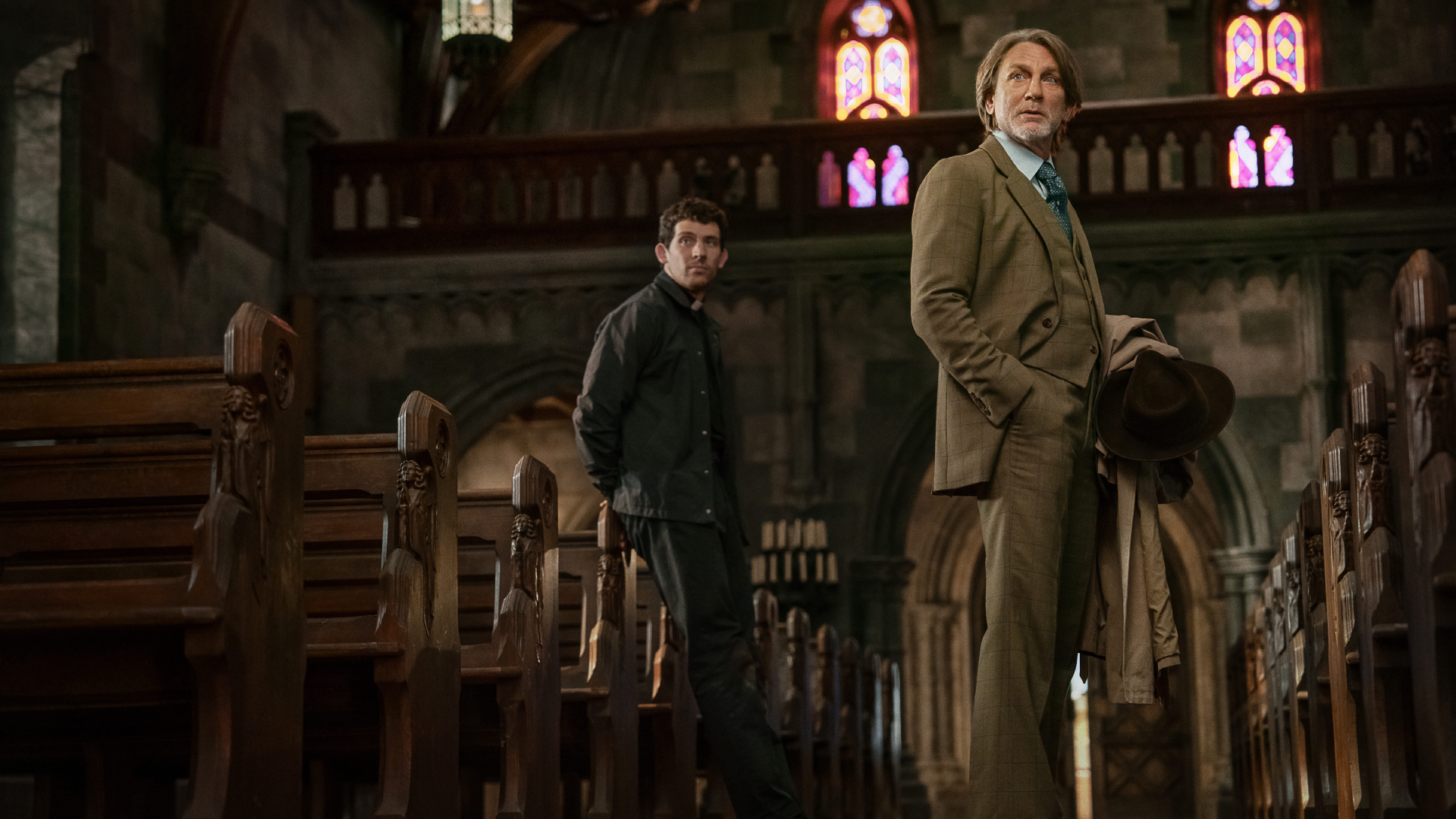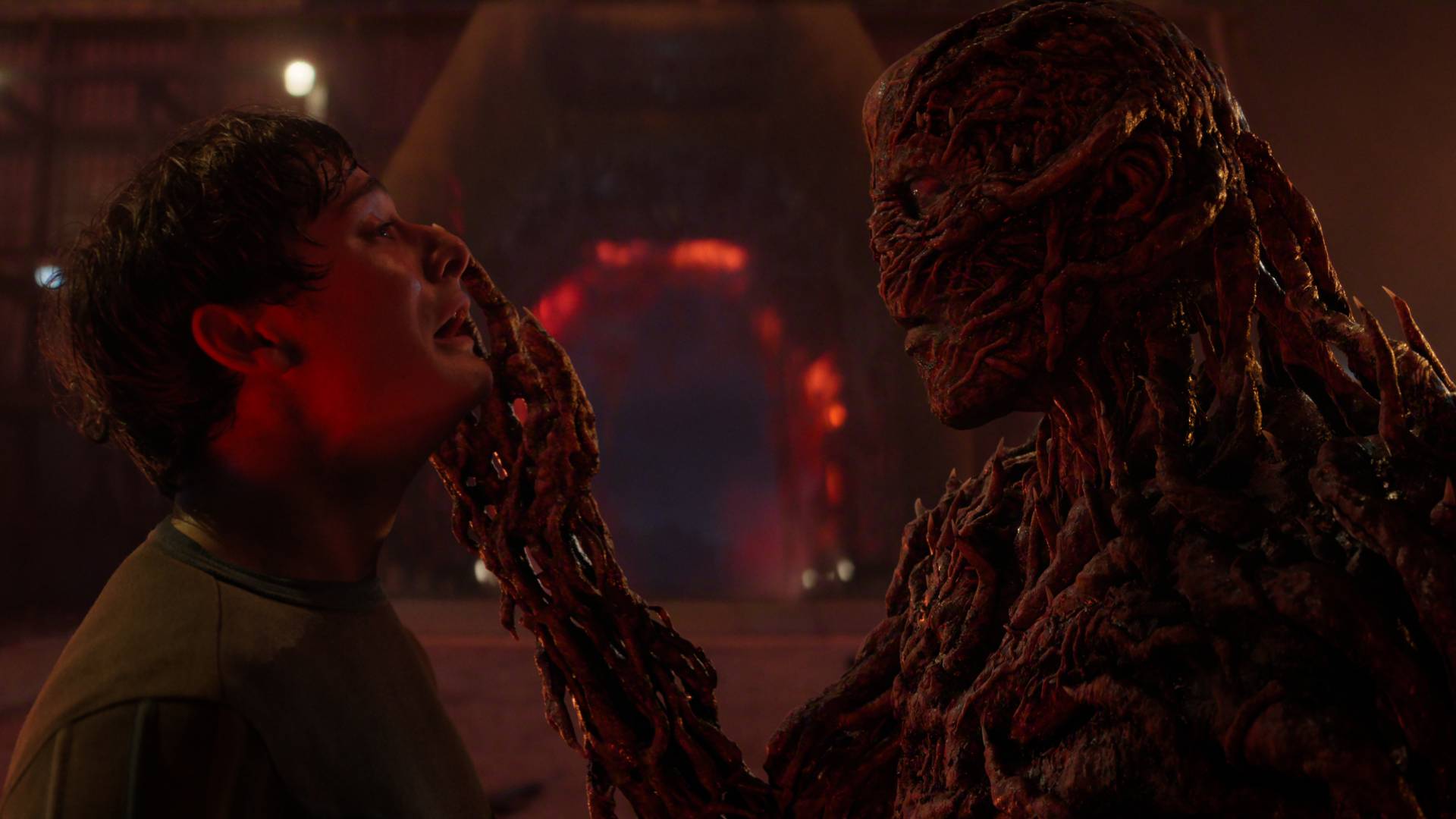GamesRadar+ Verdict
Death Stranding 2: On the Beach builds on the foundations of the original, but adds whole new wings with a different vibe. This tarpunk delivery epic is more Metal Gear Solid than ever, for better and worse – but it well serves series fans like me. Charmingly bizarre with its worldbuilding and spectacle, there's still a real sense of community as you bring the world online with other players at your side.
Pros
- +
Gorgeous and tactile world to navigate
- +
Tarpunk sci-fi concepts better than ever
- +
Sense of online community is fantastic
Cons
- -
Friction sanded down a tad too much
- -
Not a lot of reason to use its most creative tools
- -
Combat is a bit simplistic
Why you can trust GamesRadar+
Death Stranding 2: On the Beach is often about dealing with the unexpected. On one mission, tar suddenly pools at my feet, and I'm suddenly introduced to 'ghost mechs' oozing their way towards me out of the ground. Moving oddly, and wielding blades ready to strike me and my precious cargo down, I unload the last of my shotgun pellets into them, time-slowing to highlight their animalistic death throes. Out of ammo, I scoop up one of their own blades. Steel sings as we make one final clash. Victorious, protagonist Sam Bridges piles his rewards onto his backpack, turns, trips over a small rock, and all of his inventory scatters everywhere as he tumbles into the mud.
It's a laugh out loud bit of slapstick – the kind of bizarre and tactile mundanity that's made all the more funny in how it clashes against the extremely extra aspects of the Death Stranding 2 universe, full of paranormal babies in jars, ethereal mechs, and goopy, supernatural tar. It's this physicality that really made the first Death Stranding shine, my memories of honing tricky delivery routes between waystations sticking in my memory far more than its bonkers sci-fi plot.
That physicality remains a core part of Death Stranding 2, continuing to generate these moments. But rather than a redo of the original's best bits, it's now only one part of Death Stranding 2's hefty backpack that's been rearranged and rebalanced. There's a lot less friction this time around, and the pacing is different, but I've come to appreciate how Death Stranding 2 stands apart while still being in conversation with Hideo Kojima's prior work, Metal Gear Solid.
Getting too old
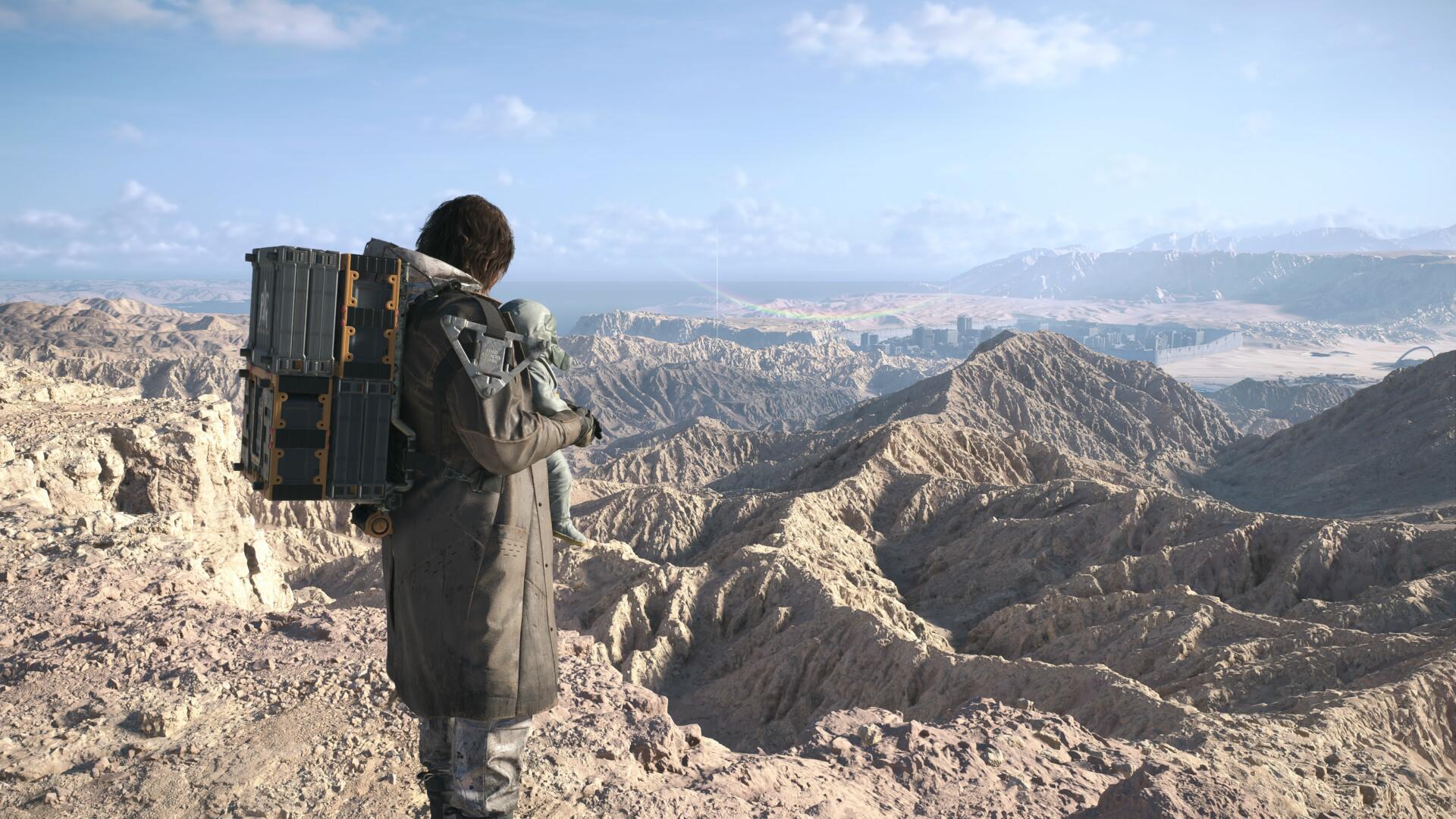
Developer: Kojima Productions
Publisher: Sony
Platform(s): PS5
Release date: June 26, 2025
Death Stranding 2: On the Beach picks up with Sam Bridges (played by Norman Reedus) and his baby Lou not long after we left them in the last game. After reconnecting the United States to the chiral network – a kind of supernatural internet – from one coast to the other, the pair have crossed over to Mexico and fallen off the grid.
The restored chiral network is only a small salve to the titular death stranding, which has pushed communities apart as the thin veil between our world and the afterlife (the 'Beach') has resulted in ghoulish mortal-hungry BTs ('Beached Things') stalking the land, and near constant timefall that rapidly ages anything it touches. As someone with DOOMS, special powers a few have acquired due to the death stranding, he's one of few who can brave the outside world. His power, in-universe, is the ability to use extra lives if he dies. But, having done his bit, the post-apocalyptic postman is now retired, undertaking the greatest delivery mission of all – raising his baby.
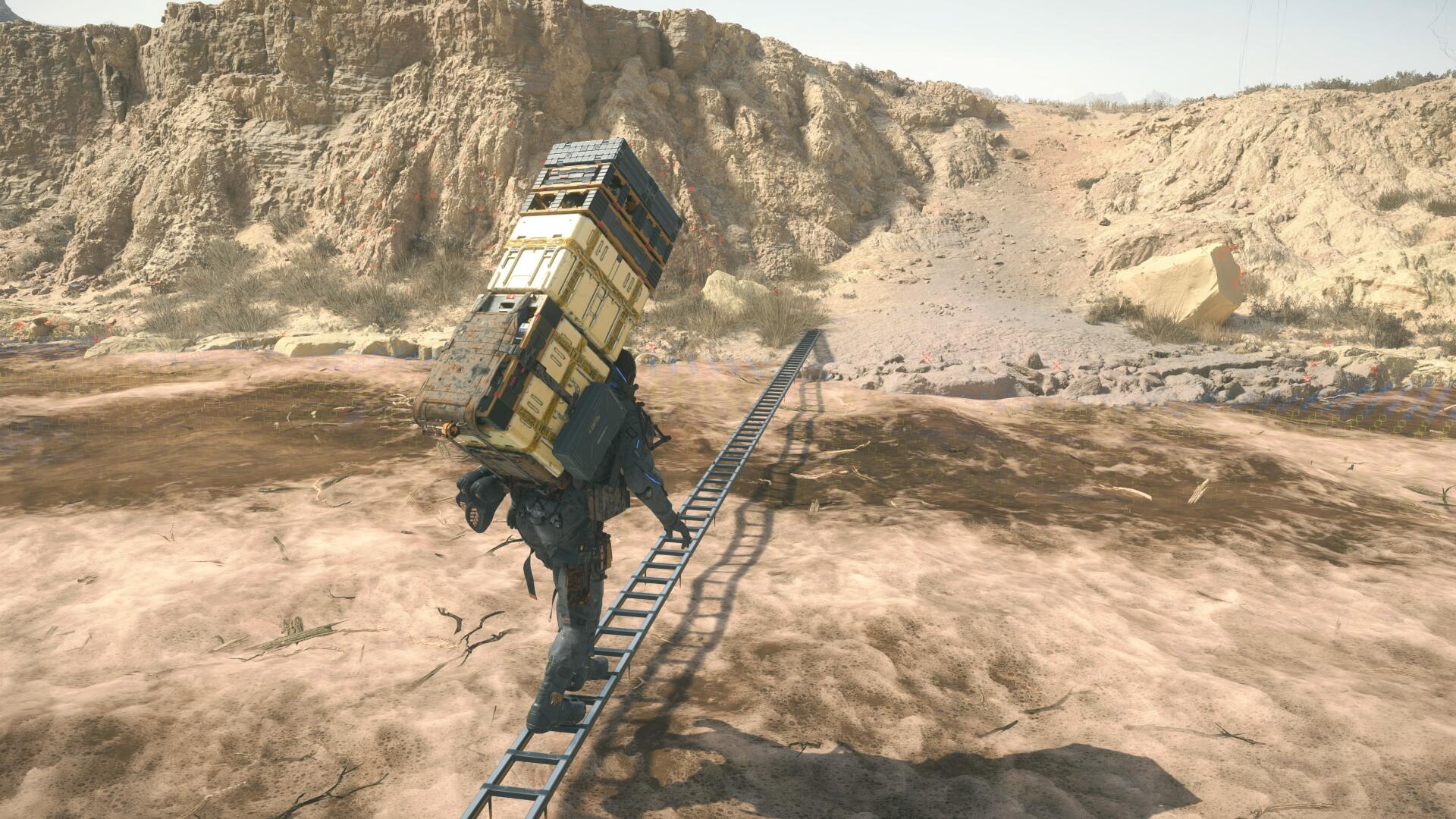
That is, until Fragile (Léa Seydoux) appears on his doorstep. Once allied in the plight to reconnect the USA, she needs his help for one last job – reconnecting key points in Mexico in the hopes of stopping an onslaught of natural disasters and securing vital death stranding research. One thing leads to another, and Sam finds himself recruited to Fragile's Drawbridge, a kind of X-Men organization that brings the strange tarpunk world's best supernatural talent together. They'll need every advantage to survive a cross-continent trip to Australia in order to kickstart a global chiral network.
Death Stranding 2: On the Beach is at its best leaning into this expanded, quirky main cast of characters. Moments that spotlight the individual backstories that led each member to join are highlights, playing out like an anthology of short stories. While the first game touched on these powers, Death Stranding 2 expands on them greatly, with some really creative and unique ideas that make the most of this sci-fi setting.
Weekly digests, tales from the communities you love, and more
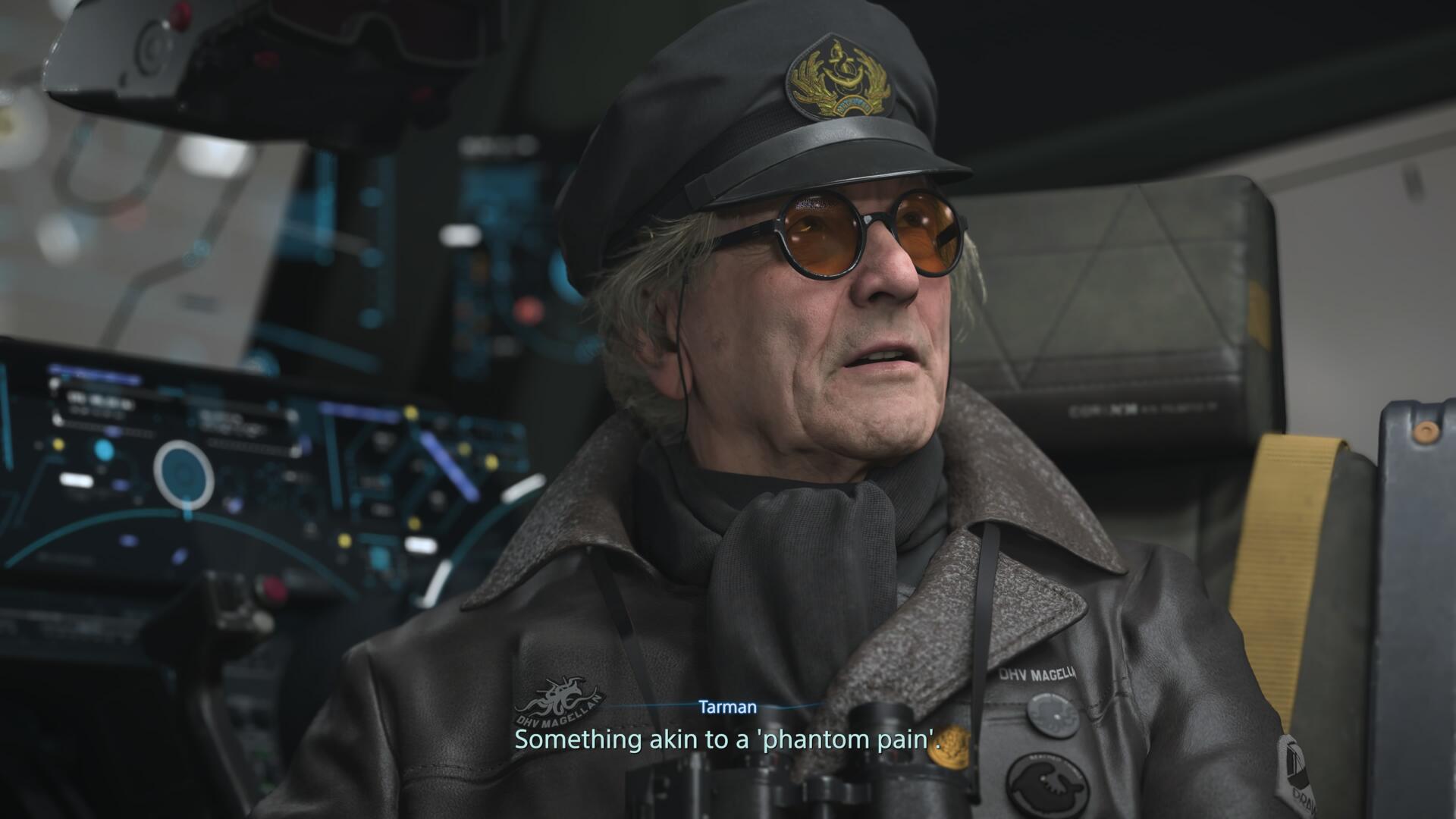
You can hurl Dollman high into the air where he'll remain suspended, able to look around and highlight enemies.
For instance, Tarman – who has the visual likeness of filmmaker George Miller – is captain of the Drawbridge's mobile base of operations, the DHV Magellan, which he can use to fast travel through pools of tar connected to the chiral network by feeling his way through them using his disembodied hand that's permanently within the tar. Even returning characters like Heartman (who dies every 21 minutes, giving him a short while to explore the afterlife before resuscitation) enjoy expanded dimensions.
Dollman is a particular highlight, becoming Sam's constant companion throughout his Australian adventure. A talking, stop-motion puppet that's animated at a different framerate to everyone else, he's a former spirit medium and psychologist who always has plenty to share (he's a bit Codec-coded for the Metal Gear Solid fans). But he can even help out in a pinch; you can hurl him high into the air where he'll remain suspended, able to look around and highlight enemies by sharing his vision with Sam.
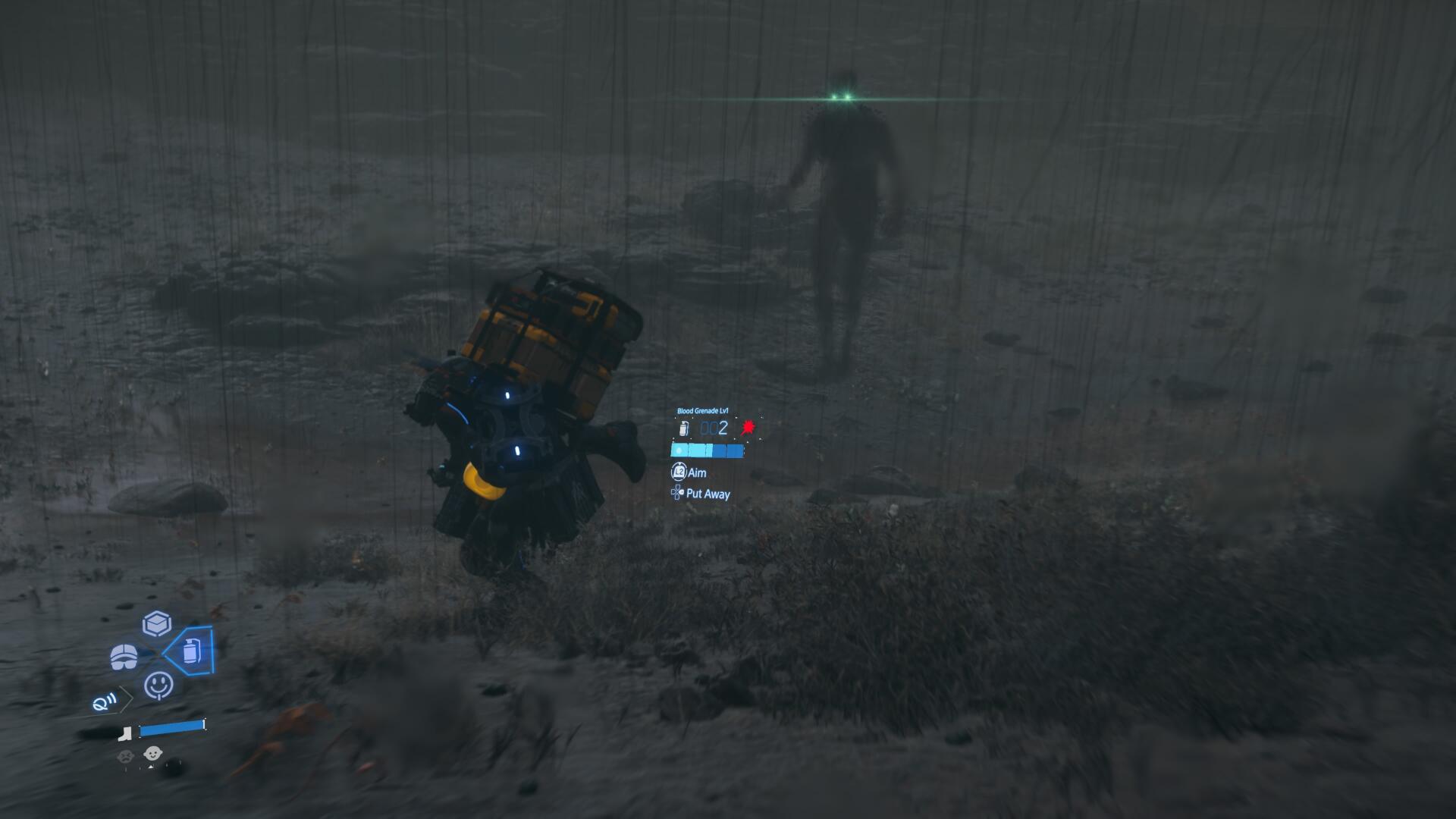
Leaning into the tarpunk strangeness of this paranormal world is fantastic, and really highlights this fresh sci-fi set-up's strengths. If some of your favorite parts of Metal Gear Solid were the weird powers, then you'll love the universe Death Stranding is building – and there's more than a few direct references to the similarities (turning me into the Leonardo DiCaprio meme where I'm pointing at the TV). I do wish there was a bit more to each of the Drawbridge characters beyond some optional scenes though. While they all have character arcs throughout the story, it often feels like they happen just off-screen from Sam – I'd have loved Sam to take a more active role in assisting each of them.
Even though his delivery journeys still make Sam a bit of a lone wolf, I do love him more this time around as part of the Drawbridge team. Trading in sterile private rooms at delivery hubs (though they do return) to bunk up in the cramped quarters of the DHV Magellan, Sam feels more connected to those around him. The stakes feel more personal than ever too – Reedus has to inject a lot more emotional range into Sam, and does it well while remaining understated. He's an introvert struggling to connect while experiencing fatherhood, while remaining humanity's best hope at building community.
Hail to the delivery man
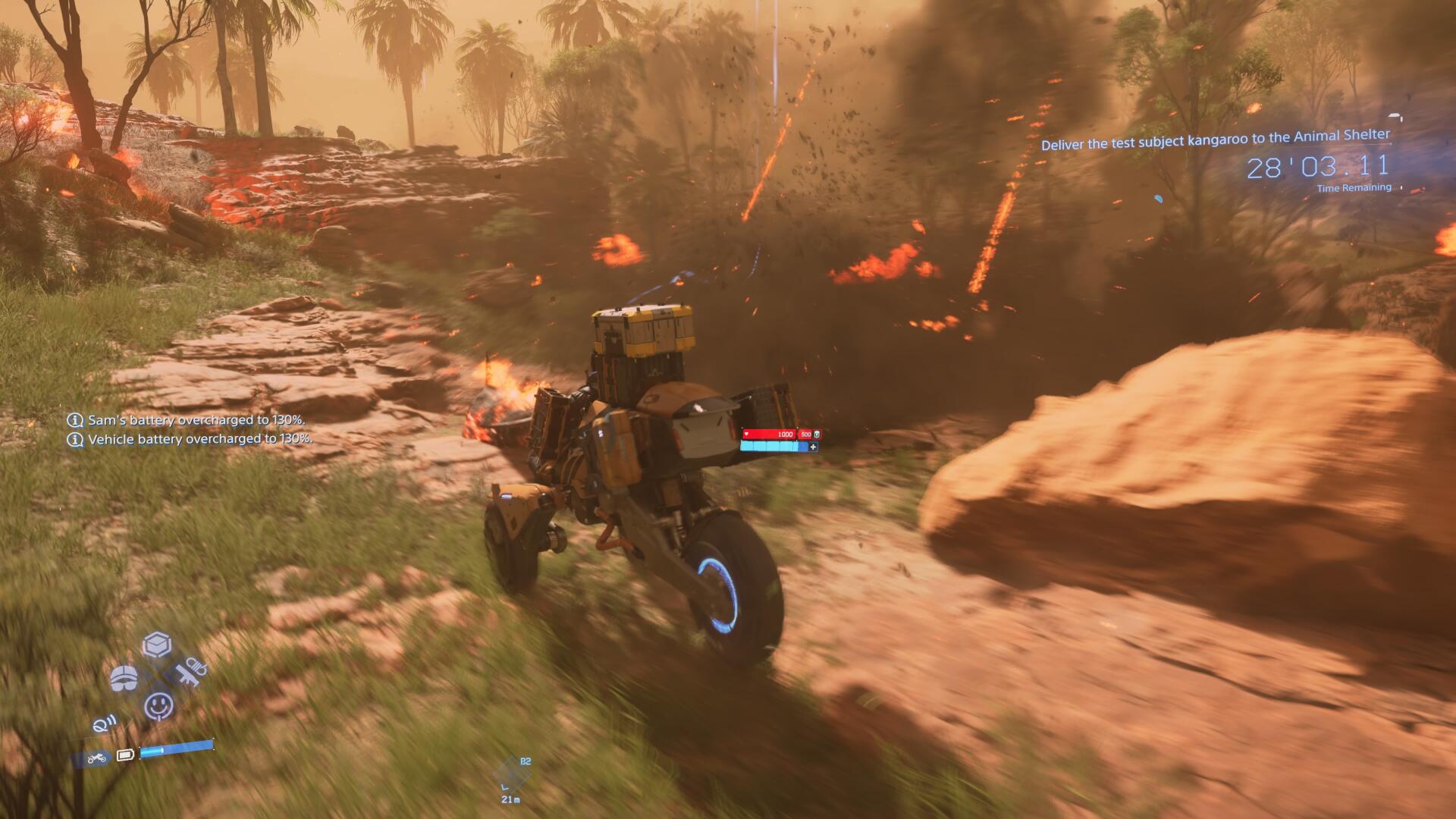
Structurally, connecting Australia to the chiral network is much the same as connecting America – Sam has to deliver packages from one waystation to the next after which they'll come online, with a handful of optional preppers (holed up a bit more out of the way) who may be fussier with requirements. That means scooping up a bunch of heavy packages and setting out across tricky terrain either on foot, in a vehicle, or somewhere in between – like chaining together floating carriers to follow behind you.
Plenty of new hazards make Death Stranding 2's deliveries feel much more varied, while simultaneously sanding down the rough edges that could make the original quite challenging. For the most part, this ends up a net success – though delivery veterans like me may be a bit put out that it ends up easier. A lot of additions make the dangerous world feel more alive. Frequent natural disasters like rockfalls, river floods, brush fires, and tar-spilling, BT-spewing quakes mean even well thought out routes can change suddenly. Likewise, chiral creatures like horrible spider swarms that sap vehicle batteries can raise the stakes of cutting through clifftops or jungles.
There are more enemy varieties now too, essentially making for three factions. BTs return with several new variations beyond simply hanging in the sky, and humans can wield a variety of loadouts. Ghost mechs are the big new addition. Wonderfully angular (designed by Metal Gear Solid's Yoji Shinkawa), these ethereally-powered mechs jerk around like puppets on strings, capable of taking and dishing out a lot of damage.

Bosses are spectacularly designed but often simple affairs.
Rather than all this variety overcomplicating, some features have been flattened and can feel a bit 'one size fits all' as a result. Vehicles are better able to navigate all sorts of terrain now, so there's little reason to strike out on foot bar a few specific missions. Ostensibly, different weapons are more suited to each of the factions, but a lot of them can be used on any. That includes most guns working on BTs, meaning tense navigation around the ghoulies is now better resolved by unloading a full clip into their creepy bodies.
Likewise, whereas in the first game you had to be careful not to kill humans otherwise you'd need to rush their bodies to an incinerator before a supernatural explosion occurred (don't worry about the why), almost everything here will knock them out – you really need to go out of your way to make a mistake. Bosses are spectacularly designed but often simple affairs that task you with scooping up nearby weapons and unloading on weak points.
Sam's arsenal is pretty overpowered as a result. Once I unlocked a suppressed, lightweight assault rifle I found I could take out most camps at range via headshots without people noticing. Still, there's a satisfaction to camp-clearing that tips its well-armed helmet to those found in Metal Gear Solid 5's similarly designed open worlds – which could also become a bit of a breeze once you understood its rhythm. In Death Stranding 2, at least, making off from a camp with all their supplies literally tucked under your arm as you try to balance your downhill sprint carries with it a feeling of cheeky glee.
Off-site procurement
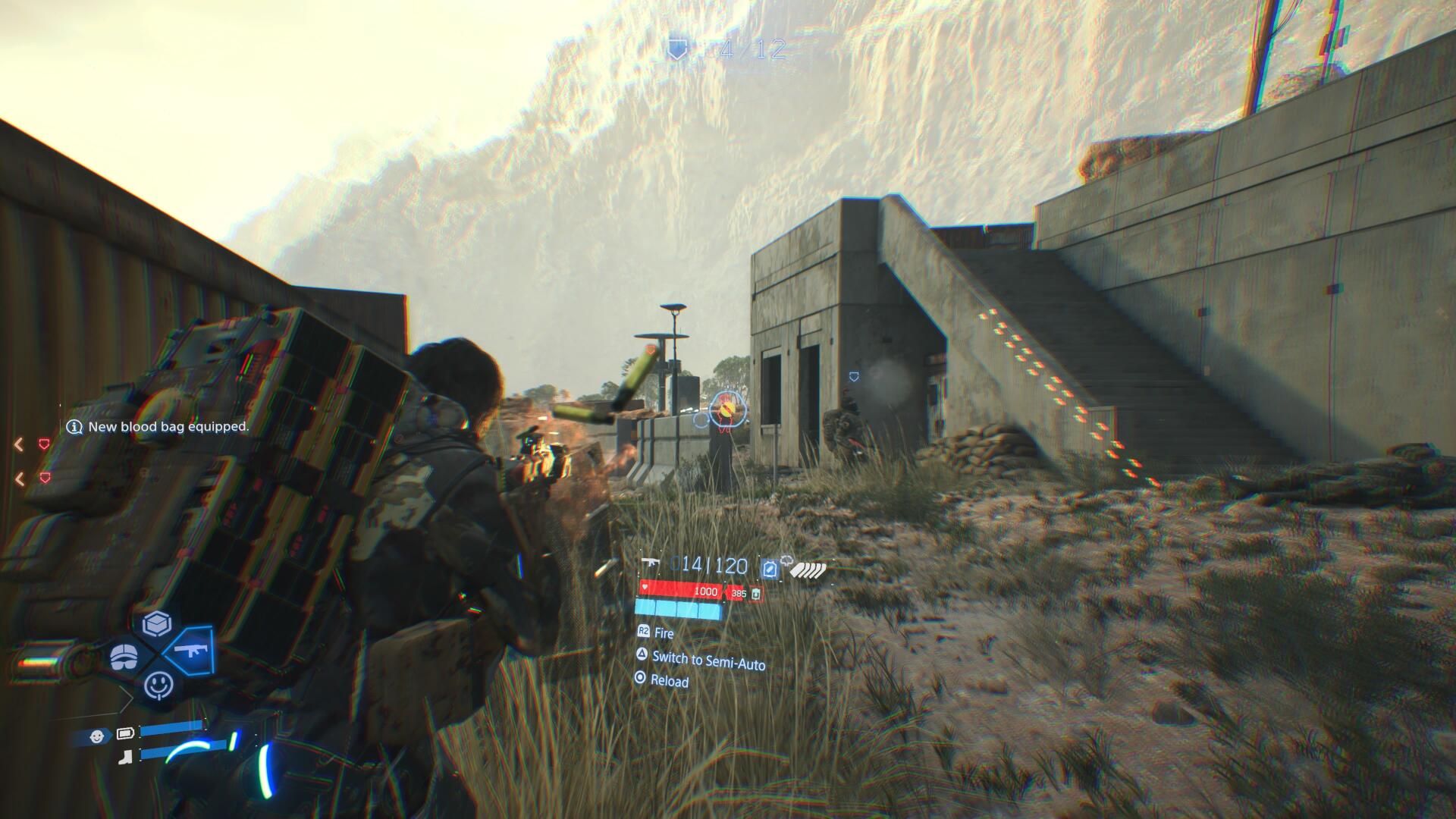
Venturing out into areas disconnected from the chiral network does make things marginally more challenging than mastering routes you've already brought into the fold. You're also disconnected from your online network, meaning you can't share player resources or structures outside of the basics, such as placing ladders and climbing anchors – both of which have been powered up this time around. Still, rarely is this an issue when you can still just drive your bike directly there.
When linked up, though, player structures will litter the environment – think bridges crossing big rivers, or generators to keep your vehicle batteries powered up. Adding resources to roads and monorails (the latter being new to Death Stranding 2) also contributes to a shared pool with linked players. Resources required to build bigger structures are far more plentiful this time as well – thanks to mines – which means navigating Australia is actually quite straightforward.
Even ferrying resources about is easier than ever thanks to the DHV Magellan, which Sam can direct to fast travel between most key waypoints instantly – huge storage locker included. You can even use it to fulfill delivery missions, though that will stop you from being able to achieve an S ranking, giving you a special 'I used the fast travel' grade instead. It's nice for players to have the option (I prefer nabbing S ranks personally).
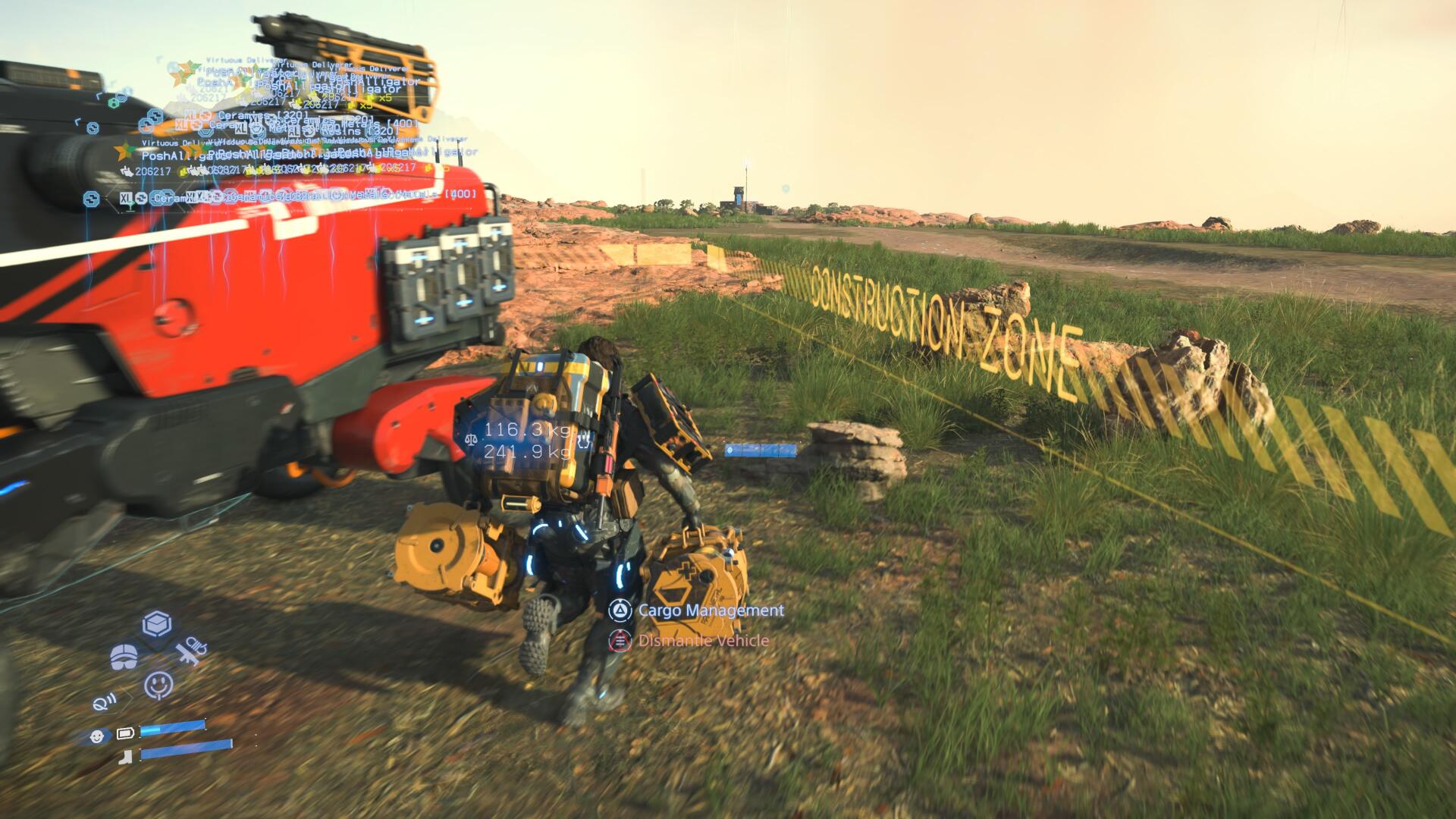

I'm here to review Death Stranding 2 not its trailers, but wow I'm glad I skipped a lot of the straight cutscene ones. Almost every big cutscene has already been shown, including a lot of late game wildness. I wish I had seen less to be honest. So be careful what you watch – reel it in, Hideo!
Still, there can be some instances where making the game easy for yourself can actually feel pretty satisfying. One early-ish mission tasked me with going from one end of my unlocked map to the other with loads of heavy cargo. But, having restored a full monorail system between those two points, it was just a matter of hanging onto a loaded train and waiting for it to get there – because I had built that.
While player structures can make your journey a bit too easy at times, it's rewarding to feel that sense of community lifting everyone up. For instance, I love to see IGN France has made good use of my roads and carefully placed generators. For another example during one mission that had me teleport without any of my cargo to begin with, seeing another player's motorbike waiting just outside the mission start point made me feel grateful indeed. This is a bleak world but there's a relentless feeling of positivity, right down to the main method of interaction being mashing the like button to yell words of encouragement and appreciation.
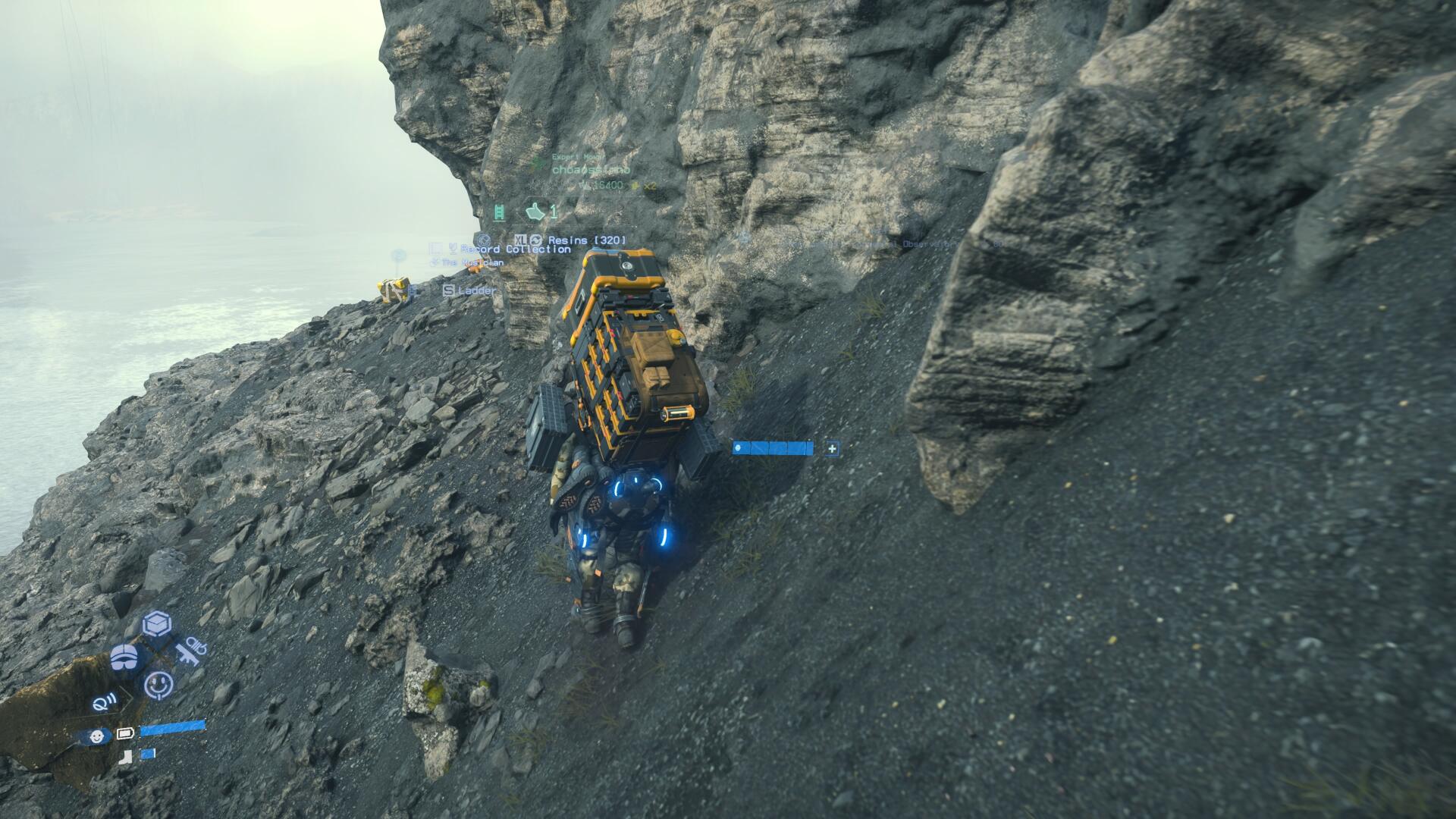
There may be less tension, but there's still a sense that we're all chipping in to build something better together – and using that connection both narratively and mechanically remains terrifically unique. Zig-zagging across Australia is tremendous fun.
The greater emphasis on action and worldbuilding might move Death Stranding 2 away from the hiking focus I loved about the original but, as a Metal Gear Solid fan, this is a thrilling mix that helps this sequel stand apart rather than just reheating the same thing. Ultimately, I really love how worldbuilding has been expanded here, making Sam's adventure feel a lot more lively thanks to the Drawbridge crew. That's what I'll carry forward from this one – while wishing I had a real life Dollman to join me on my weekly shop.
Hideo Kojima compared his approach to the sequel as going from Alien to Aliens – the same story in a different genre. I can feel that when I play it. But it does have me wondering – as the credits roll after a series of lengthy ending cutscenes that are so bizarre you wouldn't believe me even if I did spoil them – what will the Alien 3 of Death Stranding look like?
Death Stranding 2: On the Beach was reviewed on PS5 Pro, with a code provided by the publisher.
Looking for more from Hideo Kojima? Check out our best Metal Gear games ranking!

Games Editor Oscar Taylor-Kent brings his years of Official PlayStation Magazine and PLAY knowledge to the fore. A noted PS Vita apologist, he's also written for Edge, PC Gamer, SFX, Official Xbox Magazine, Kotaku, Waypoint, and more. When not dishing out deadly combos in Ninja Gaiden 4, he's a fan of platformers, RPGs, mysteries, and narrative games. A lover of retro games as well, he's always up for a quick evening speed through Sonic 3 & Knuckles or yet another Jakathon through Naughty Dog's PS2 masterpieces.
You must confirm your public display name before commenting
Please logout and then login again, you will then be prompted to enter your display name.
